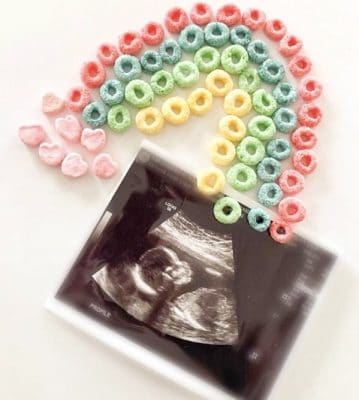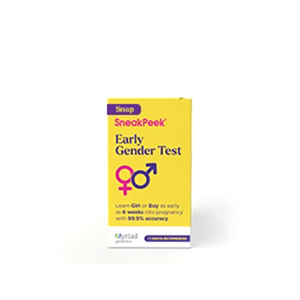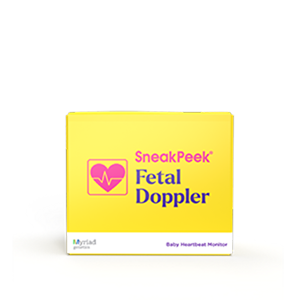Published on December 18th, 2019
The number of births in the U.S. is at a 32-year low, but that doesn’t mean that family planning is following suit. In fact, families are becoming strategically planned now more than ever as many modern women and families are choosing to wait longer to have children. More women are integrating into the workforce, and may have less opportunity for maternity leave. Whether you are choosing to plan for the future or the time is now, preparing for pregnancy and following these tips may improve your chances of conceiving a baby quickly.
Get Healthy As A Couple
Partners who are actively managing their lifestyle can dramatically affect their reproductive health not just during the pregnancy, but leading up to it. Three lifestyle choices/contributing factors that have been found to directly impact reproductive health include the following: nutrition, exercise, and psychology. The following data was found in an article published in BMC.
While healthy eating choices can impact overall health, there are certain vitamins and food groups that have been found to play a larger role in reproductive health than others.
For males, semen quality can be improved by lowering the intake of proteins and fats and increasing the intake of:
- Carbohydrates,
- Fiber,
- Antioxidants (Lycopene),
- Folic acid (Folate),
- Fruits,
- Vegetables.
For women, ovulation and fertility may be improved with a diet that recognizes the following:
- Vegetables are preferred over Carbohydrates,
- Carbohydrates are preferred over animal proteins,
- Trans fats are healthier than monounsaturated fats,
- High-fat dairy products are healthier than low fat,
- A decrease in glycemic load,
- An increase in iron and other multivitamins.
Balanced physical activity can also protect fertility health. Moderate exercise is key to maintaining health. Excessive exercise can negatively affect the balance of the body’s reproductive system, due to a negative energy demand that may alter hormonal balances and the opportunity for conception in females.
Focusing on emotional wellbeing can greatly influence fertility in both partners. For males, depression and reduction of testosterone has been linked, which leads to a negative impact on sperm density.
For women dealing with emotional stress or depression, there is a correlation in increasing the chances of pregnancy by dealing with stress through the use of a behavioral intervention, a support group, or counseling. It was found that positive moods correlated with increased chances of fertilization, as well as a live birth. Consider creating a plan that reduces stress and includes relaxation techniques that may include yoga, light exercise, meditation, a healthy sleeping schedule, and social support.
Get Off Birth Control Ahead of Time
Preparing for pregnancy may include getting off birth control. The timeframe for ovulation and the opportunity for fertilization may range depending on the type of birth control used. You should be aware that for some, the ability to conceive may be sooner than you think. Do not get off birth control until you are ready and planning to become pregnant! Consider these time frames for getting pregnant after ceasing use of birth control:
- Barrier methods: Immediate,
- Birth control pills: 1-3 months,
- The minipill (progestin-only) may be as little as days or weeks,
- Birth control patch: 1-3 months,
- Vaginal ring: 1-3 months,
- IUD: immediate to one month, sometimes up to 6 months,
- Injectable birth control (Depo shot): estimated 10-18 months.
While pregnancy soon after birth control was once considered a higher risk for miscarriage, recent research has proven that it is safe to conceive right away.
Know When You’re Ovulating
Ovulation is the release of a mature egg that travels down the fallopian tube to be readily available for fertilization. Ovulation typically occurs every month, when the lining of the uterus has thickened in preparation for a fertilized egg. If no fertilization occurs, the uterine lining sheds; this shedding is commonly known as a menstrual period.
Tracking the menstrual cycle can help optimize the opportunity for fertilization. A typical cycle for a menstruating woman is between 28 and 32 days (though this may vary by individual), and is calculated from the first day of each menstrual period.
Ovulation generally occurs between day 11 and 21 of the cycle, counting from the first day of the last menstrual period. The period of expected ovulation is typically known as the fertile period. Predicting ovulation can be done as simply as counting days on a calendar, or by utilizing ovulation apps and devices.
Time Sex Based on Ovulation
It is difficult to know the exact date of ovulation, so having sex during the fertile period increases the likelihood of pregnancy. The egg is viable for 12-24 hours, and sperm may live in the body for up to five days. Many sources state that having sex regularly (every day to every three days) during the fertile period may increase the opportunity for pregnancy by ensuring that viable sperm is ready to fertilize the egg after it has left the fallopian tube.
Lying on Your Back After Sex is a Fallacy
Some positions allow deeper penetration which would make it seem logical that they would increase the likelihood of pregnancy by bringing the sperm in close proximity to the cervix, but there is no proof that certain positions are more effective than others. The same can be said of having the woman lie on her back after male ejaculation. It would seem logical that elevating hips and remaining horizontal would at the very least help against gravity, but there is no scientific evidence to support this routine.
Test Yourself ASAP
If you are actively trying to become pregnant, it is advisable to test regularly to discover if you are pregnant as soon as possible. Though many at-home tests offer early results, the most accurate time to test is one week after your expected period. Becoming aware of your pregnancy as early as possible can ensure you have the opportunity to start prenatal care, visit your doctor, and make any life changes to suit the needs of your body and the soon-to-be baby.
After becoming aware of your pregnancy, you have the opportunity to decide how you would like to share your joyous news with your partner. Once you are both aware, you can start making plans for the future, including finding out the gender of your baby!






